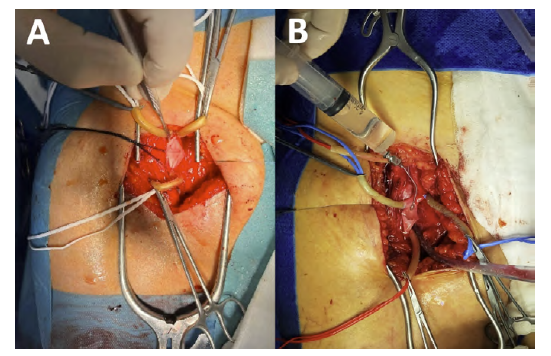
Figure 1 Panel A - venotomy and subintimal dissection to create a flap, Panel B - testing for competence of the neovalve pouch with saline infusion).
Deep venous reflux, associated with severe clinical manifestations and imaging demonstration of reflux from the groin to the calf, may benefit from surgical management. Monocuspid neovalve is a reconstructive alternative to vein segment transplant or venous transposition for cases of deep venous reflux associated with primary or secondary deep valve incompetence.
A 61-year-old female patient with severe post-thrombotic disease underwent ilio-femoral venous stenting 2 years prior. However, symptoms persisted with progressive worsening. Diagnostic phlebography showed reflux in the femoral and popliteal veins. A monocuspid neovalve was constructed in the femoral vein (Figure 1. Panel A - venotomy and subintimal dissection to create a flap, Panel B - testing for competence of the neovalve pouch with saline infusion). After operation and after 18 months of follow-up, symptoms improved significantly and the neovalve remained patent and functional.
In well selected patients, the monocuspid neovalve allows for a rapid and significant improvement in symptoms, and prevents clinical progression of deep venous disease.














